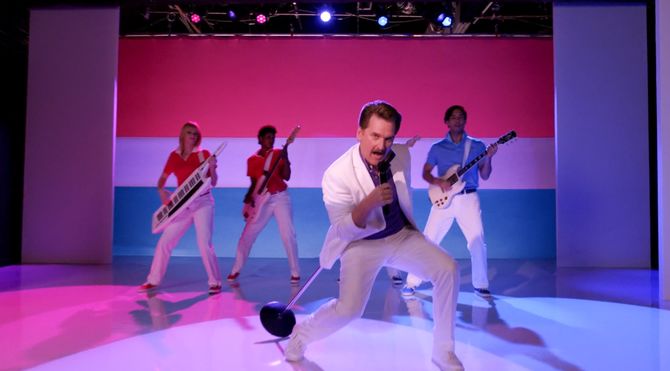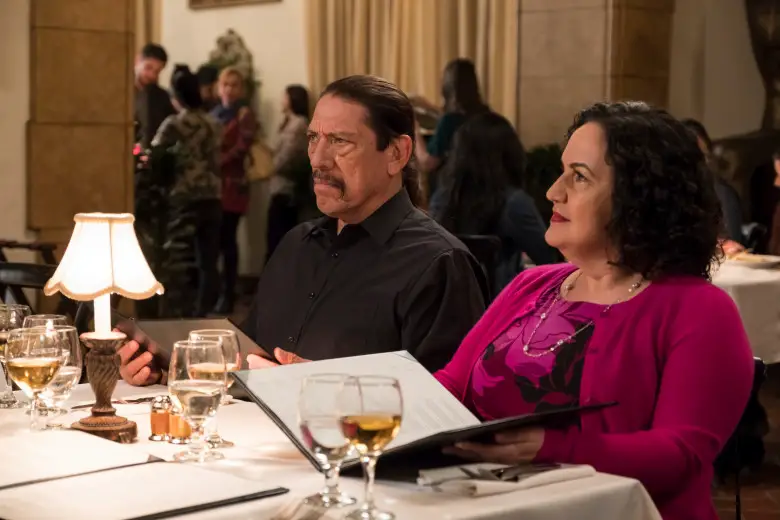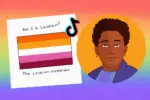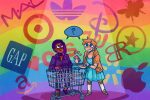Representation for gay and lesbian individuals on TV is improving, but it’s not perfect just yet. Bisexuality, in particular, is even harder to find representation for — good or bad.
In 2017, GLAAD reported that only a small percentage of shows had a character in the LGBT+ community, and an even smaller number of that were bisexual characters, which doesn’t match up with the actual proportion of bisexual individuals in society.
Viewers who are bisexual often find that characters never say the “b” word, and if they do, plenty of stereotypes come with how shows portray those bisexual characters.
Tropes of “sexy” bisexual women, threesomes or unfaithful bisexual partners damper what could have been a step forward for bisexual representation. Some shows are up to the challenge of changing the trend of negative stereotypes and using bisexual characters for a joke.
Here’s three shows that differ on how they portray their characters, exemplifying the good, the better and the best of bisexual representation.
The Good: “New Girl”
Season 5 Episode 6, “Reagan” of “New Girl,” demonstrates a laid-back approach to bisexuality. Megan Fox guest stars as Reagan, a pharmaceutical rep who knows Cece.
When it’s revealed that Reagan and Cece hooked up in the past, Schmidt, Cece’s fiancé, seems struck by the “sexy” bisexual women trope. While both women don’t make a big deal about the hookup and the casual reveal makes it seem like the show is trying to normalize bisexuality, the reactions of Schmidt and the other men border on the sexualization of bisexual women.
Though Schmidt later reveals he is jealous and worried that Cece would choose Reagan over him, his initial excitement, while comical, gives into a certain stereotype about bisexual women.

The scene doesn’t reveal too much about Reagan’s sexuality, with her simply referring to the summer she spent with Cece as the moment when she realized she was bisexual. While using the word gets a point toward representation, the rest of the episode itself doesn’t shed an overwhelmingly positive light on bisexuality.
The show does not address stereotypes, except for giving into the one trope, and doesn’t seem as committed to creating much nuance to the representation of bisexuality. Since Reagan isn’t a main character in the show, “New Girl” needs to try a bit harder for better queer representation.
The Better: “Crazy Ex-Girlfriend”
What’s better than a character using the “b” word? A character singing it.
In a more light-hearted scene in Season 1 Episode 14, “Josh is Going to Hawaii” of “Crazy Ex-Girlfriend,” Darryl Whitefeather comes out to his coworkers with an ‘80s-inspired song called “Gettin’ Bi.”
The lyrics address stereotypes of bisexuality with Darryl singing “It’s not a phase / I’m not confused,” in response to questions bisexual individuals often hear when they come out.
The song also confronts the idea that bisexuals are actually gay and should, “go gay all the way,” as Darryl sings. Addressing these stereotypes and denying them all fit in with the out and proud tone of the song.

While his coworkers are a bit apprehensive about the song (it’s happening during a work meeting, after all), the more important takeaway is self-acceptance. With Darryl performing in front of the pink, purple and blue stripes of a bisexual pride flag, the show has a character confident in his bisexuality and identity.
The fact that the bisexual character is a man carries great importance as well, since portrayals of bisexual individuals are often through female characters.
The Best: “Brooklyn Nine-Nine”
In Season 5 Episode 10, “Game Night,” Rosa Diaz comes out to her parents, and through a game of pictionary, “Brooklyn Nine-Nine” sets up a scene that addresses stereotypes of bisexuality.
Rosa’s father insists her bisexuality is just a phase, and both of her parents find it relieving that despite her attraction to girls, Rosa can still marry a man and have kids. Rosa’s response is to draw two women for the word “wedding,” which her mother fails to guess.
Rosa continues the discussion about her bisexuality, even though her parents don’t want to talk about it, saying it is not a phase. The scene closes with Rosa asking her parents for acceptance, though they don’t give it to her in that moment.

The situation, though not flowing with acceptance and happiness, represents true-to-life responses. Rosa’s parents represent the backlash bisexual individuals often receive, with arguments that bisexuality isn’t even real or that it’s a phase that will pass.
“Brooklyn Nine-Nine” accepts the responsibility of representation and does not use Rosa’s bisexuality as a joke. The scene becomes even stronger when you realize that Stephanie Beatriz, who plays Rosa, is bisexual herself.
Beatriz worked closely with the writers when developing the scene, and it shows in how accurate it is in coming out as bisexual in real life, all while using the “b” word.
This is all a mere glimpse into the short but growing list of out bisexual characters on television, but there is still room for improvement.
While “New Girl,” “Crazy Ex-Girlfriend” and “Brooklyn Nine-Nine” take different directions when it comes to bisexual representation — with some doing it better than others — there are still nuances to be explored. More bisexual male characters are a necessity as are more bisexual characters of color.
But if there is anything to realize here, it is that viewers should be critical of the representation they receive. Bisexual audiences shouldn’t have to settle for tropes.
They deserve main characters who are out and confident in their identities and who maybe face some realistic troubles along the way but ultimately find acceptance. Through that level of representation, bisexual audiences can feel that they also deserve to be out and accepted.

















